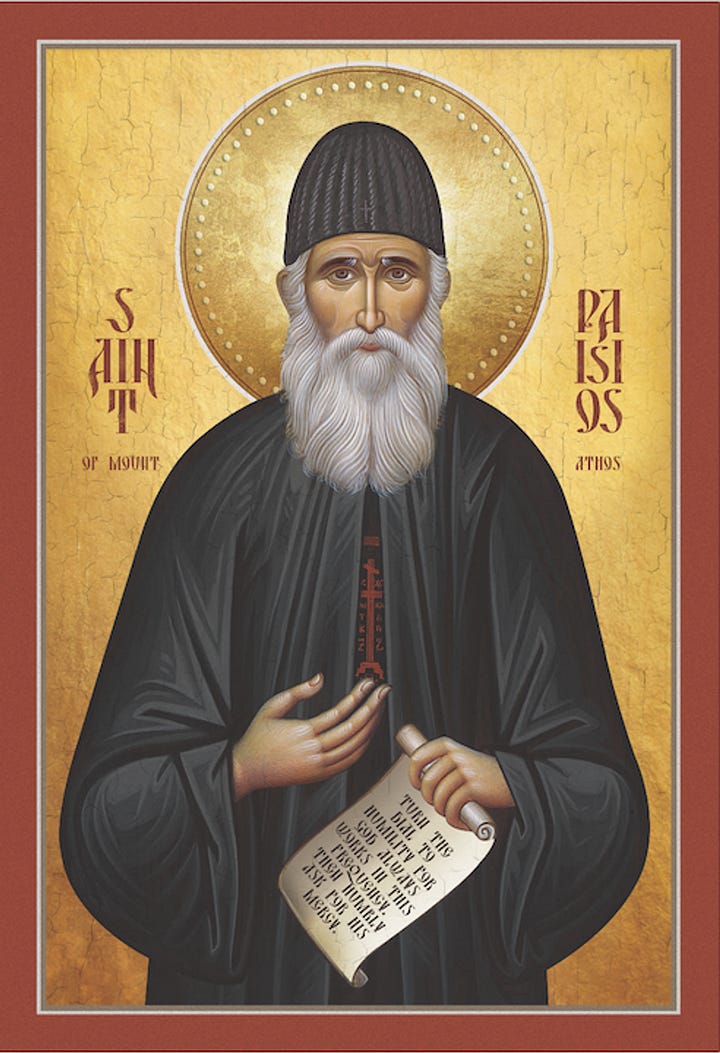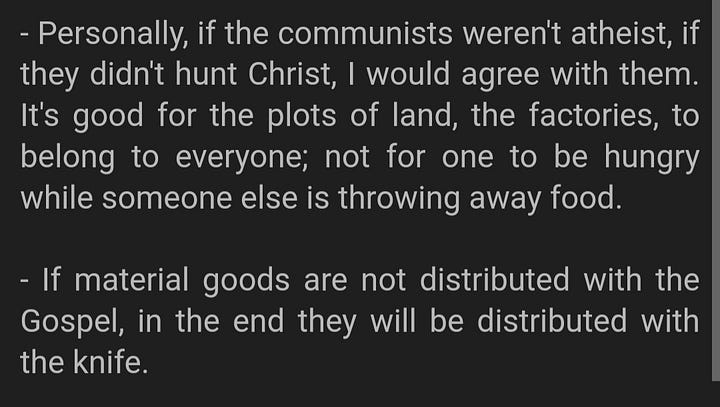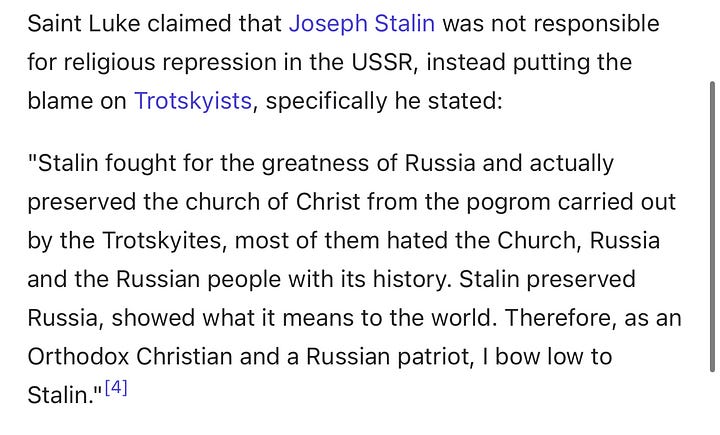Brief history of Orthodoxy in the USSR
Repost of my thread on substack for those who do not have X.
Before the USSR, there was indeed corruption within the Church as the Patriarchate was abolished in 1721 by Peter I, subordinating it to the state via the Governing Synod.
However the Patriarchate was restored in 1917 after the October Revolution, which Patriarch Pimen praised.
The Bolsheviks did not overthrow the Tsar, but rather the Freemasonic Provisional Government, headed by Kerensky which imprisoned the Romanovs.
In 2011 the Russian government did an investigation and found no evidence that Lenin or Sverdlov ordered the killing of the Romanovs.
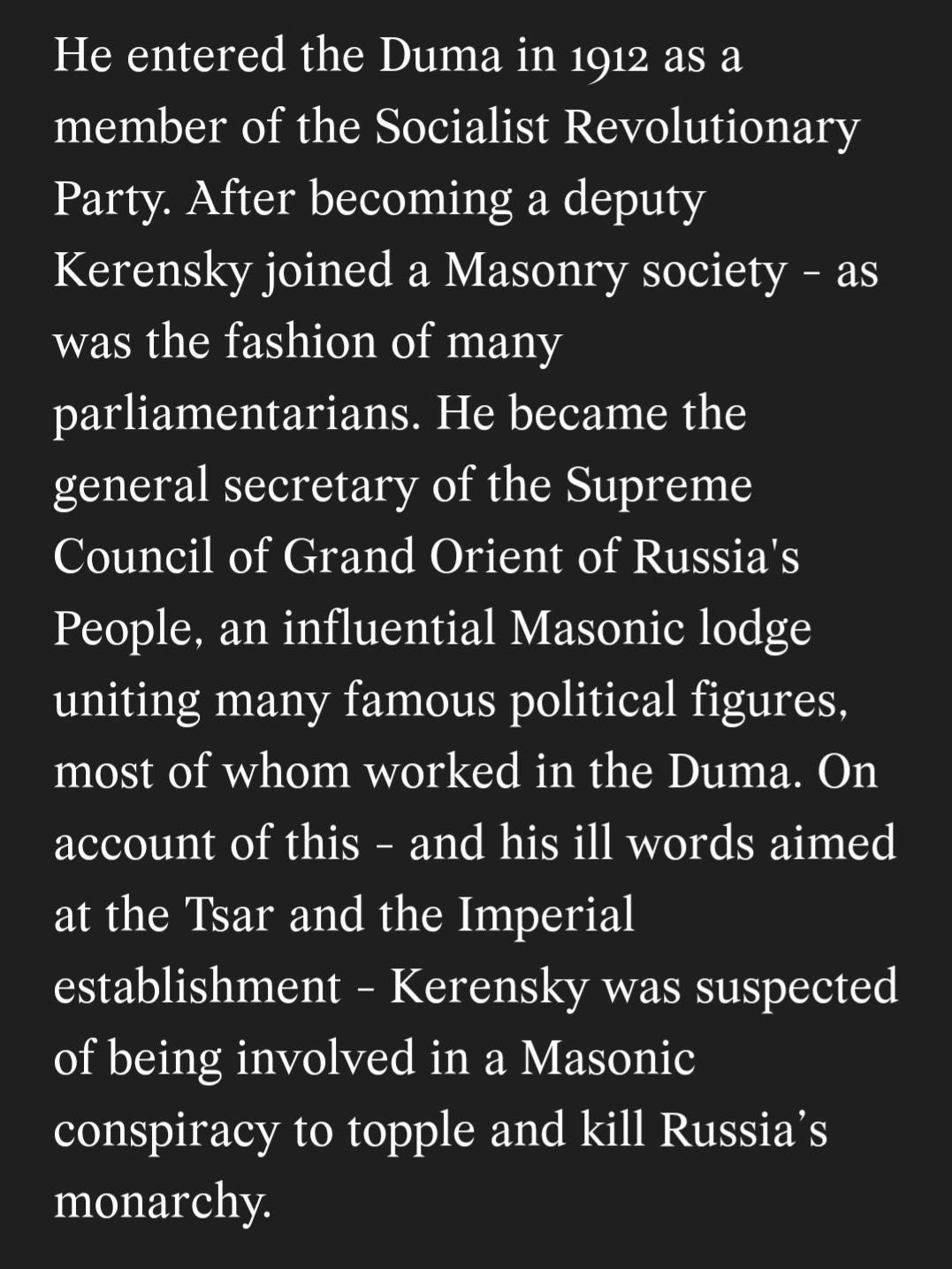
But before we get to the USSR, let's address Patriarch Tikhon.
His anathema of 1918 was due to the context of the Russian Civil War and all the chaos brought forth with it.
However, he changed his view and revoked the anathema, and by the end of his life appreciated the USSR.
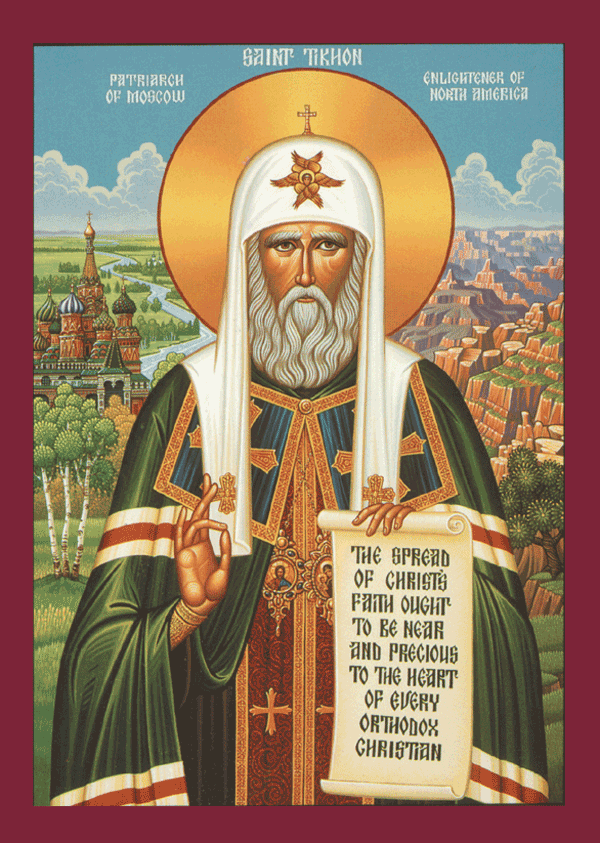
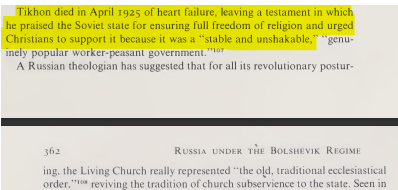
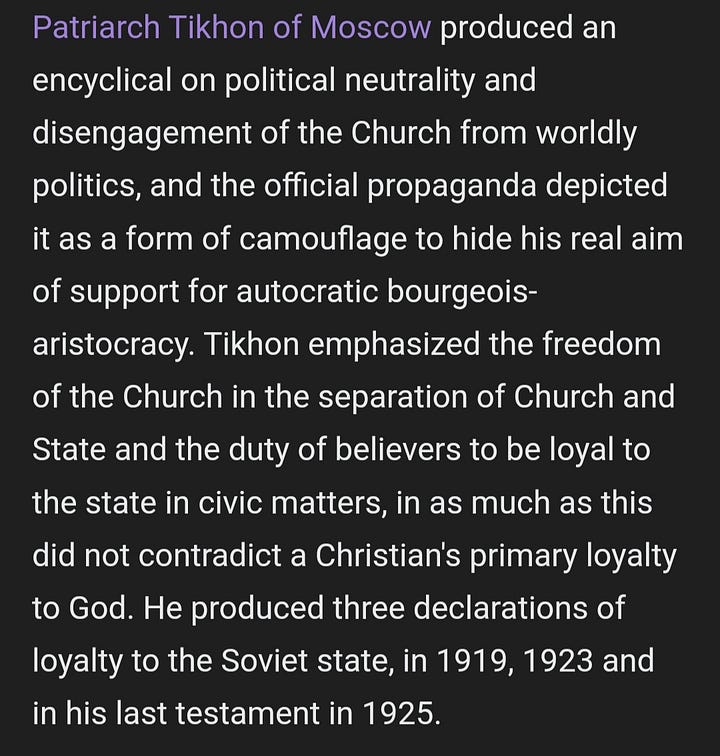
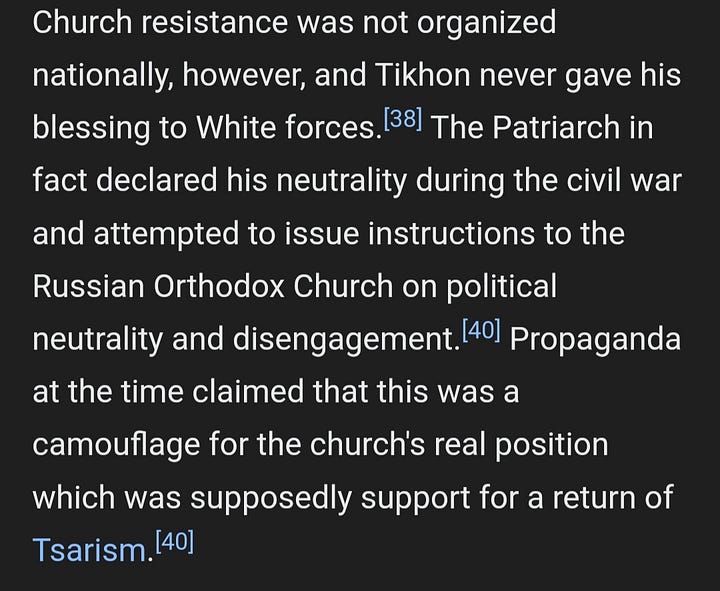
Early persecution was primarily caused by the Proletkult, which Lenin denounced.
Pavel Lebedev-Polianskii, Chairman of the Proletkult from 1918 to 1920, was a commisar of the People's Commissariat for Enlightment, which set up the basis for religious curriculum to be removed.

Lenin also did not believe Patriarch Tikhon should be arrested or killed, even when he believed (falsely) that Tikhon was the head of a Black Hundred led rebellion in Shuia.
Trotsky however did, and he headed the work on the Commission on Accounting and Concentration of Values.
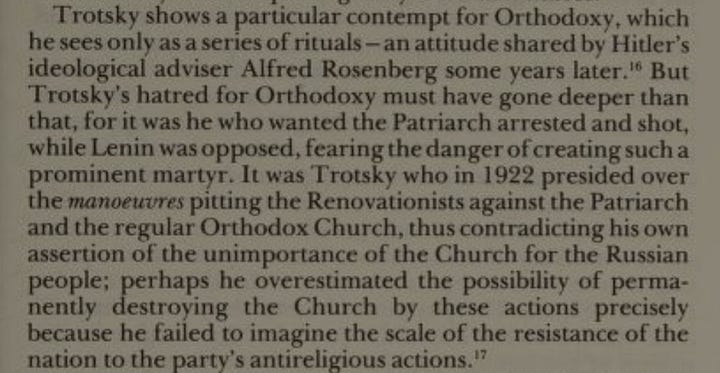

The special VI branch of the GPU became the coordinating center of all efforts to split the Church through the GPU/OGPU headed by Yevgeny Tuchkov, who also personally interrogated and arrested Patriarch Tikhon.
Tuchkov and other persecuters were purged by Stalin in the late 30s.
After Patriarch Tikhon issued a declaration of loyalty in June 1923, he was relased from prison.
Metropolitan Sergius initially entered the Renovationist/Living Church schism, but in August 1923 he repented and was accepted back into the canonical Church by Patriarch Tikhon.
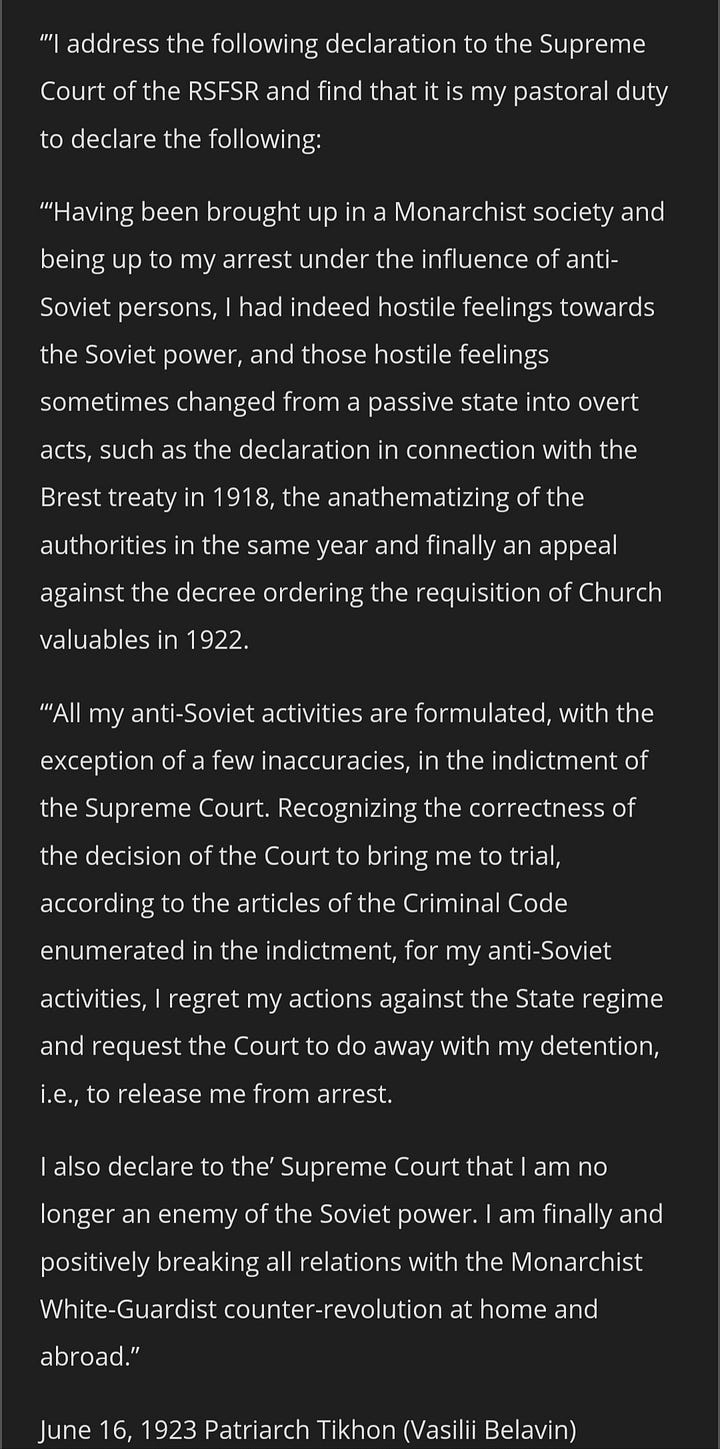
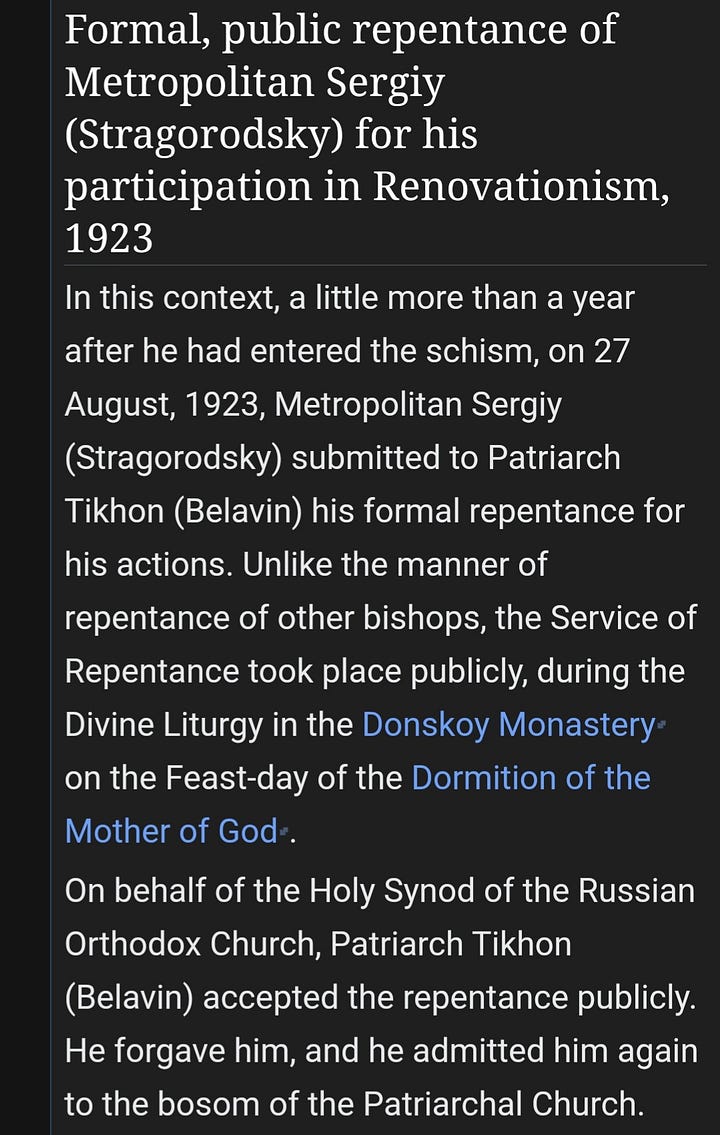
Patriarch Tikhon died in 1925, and Metropolitan Sergius was arrested in 1926.
Sergius proclaimed a declaration of loyalty in 1927 in order to be released.
If one wholely condemns Sergius due to this, then one must also wholely condemn Tikhon for his declaration in 1923.
A schism similar to the Old Believers formed after this declaration, but many repented to Metropolitan Sergius and returned to the Church.
Like the Old Believers, those against "Sergianism" were persecuted by the state.
However out of principle I'm against the persecution of both.
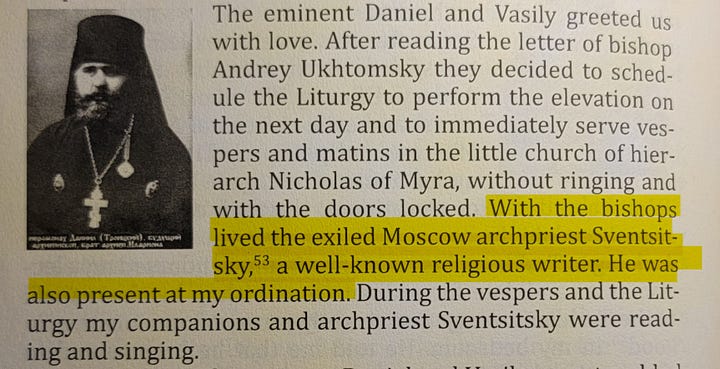

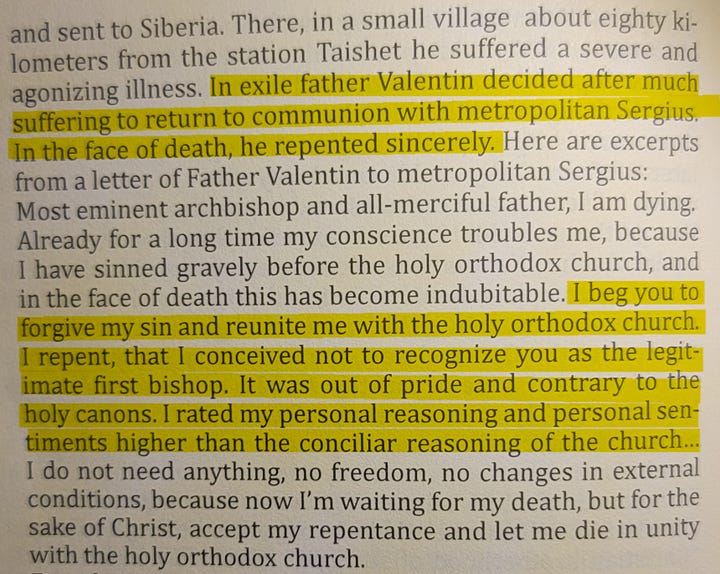
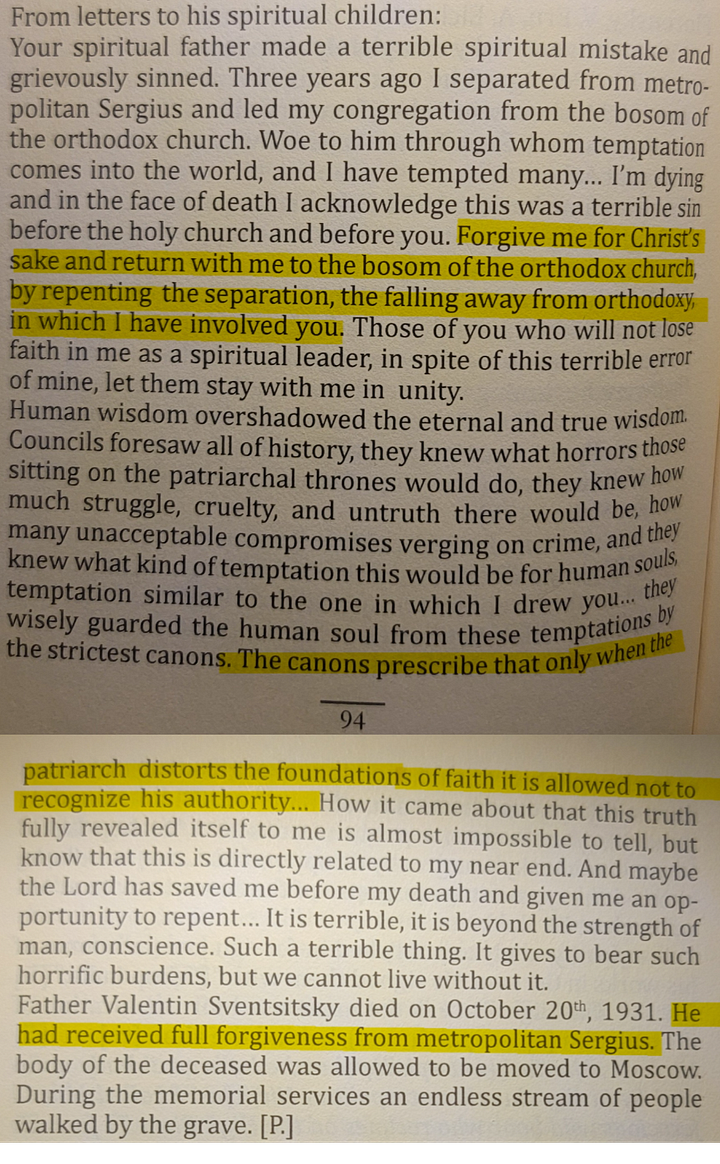
The League of Militant Atheists were to take on the next major role of religious persecution.
Formed in 1925, after a series of power struggles they had a congress in 1929 forming the basis of their activities.
Most members were purged by Stalin, and it was disbanded in the 1940s.
However despite persecution, believers were still able to petition to the government and have many issues and disputes resolved.
Although many took advantage of this appeasement policy and were giving disingenuous petitions, leading to a shift in policy.
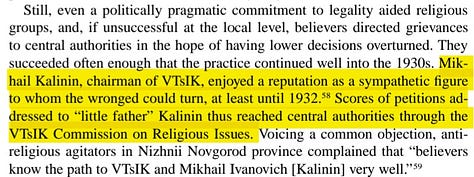

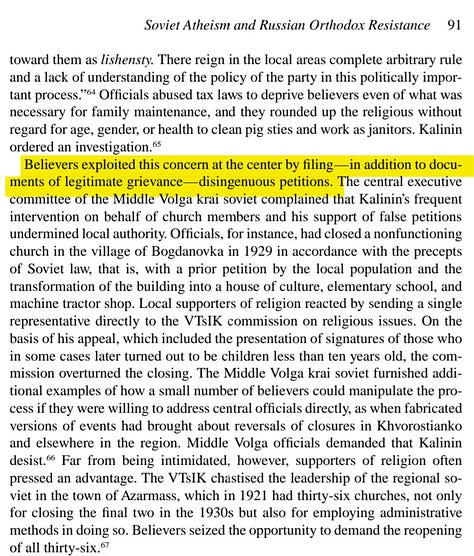
The so called "atheist five year plan" is not real.
There is no primary source evidence Stalin ordered the LMA to do this, and it wasn't even an official policy.
In 1930, Stalin made multiple statements opposing the persecution, and in 1932 the LMA actually started to decline.


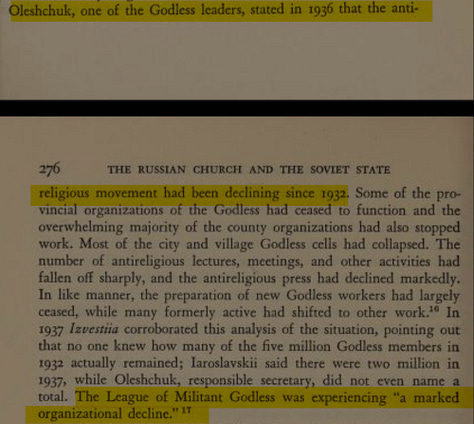
Stalin couldn't end persecution since he was outnumbered in the party.
But after purging Trotskyites like Zinoviev and Kamenev, the 1936 Constitution was adopted, bringing many fruits to the Orthodox Church.
Article 124 proclaimed freedom of religion, which faced much opposition.
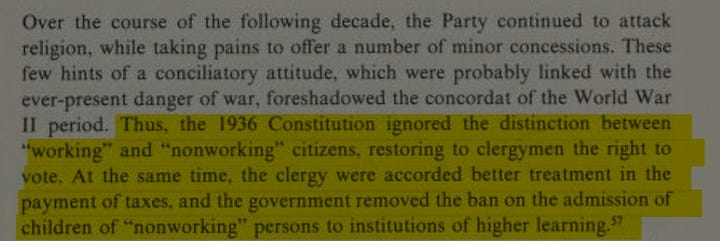
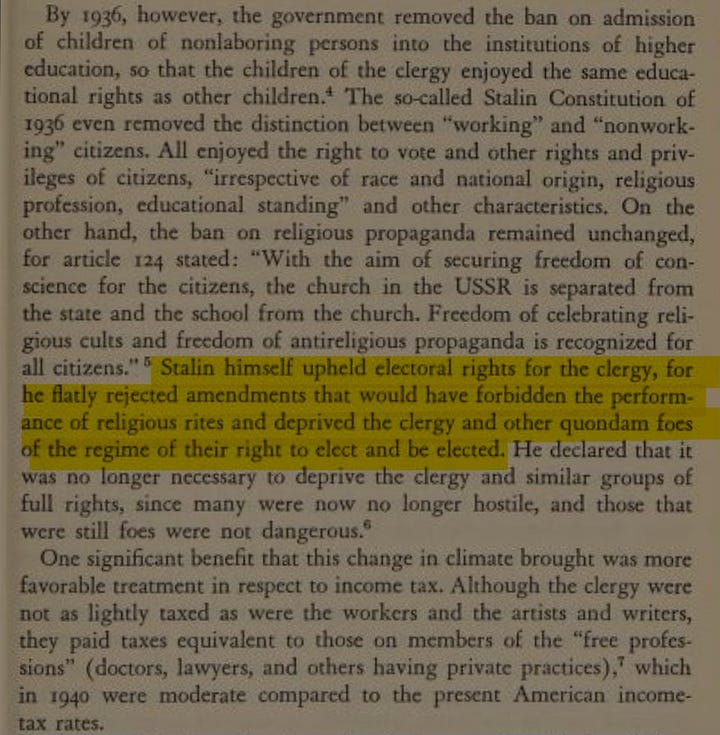
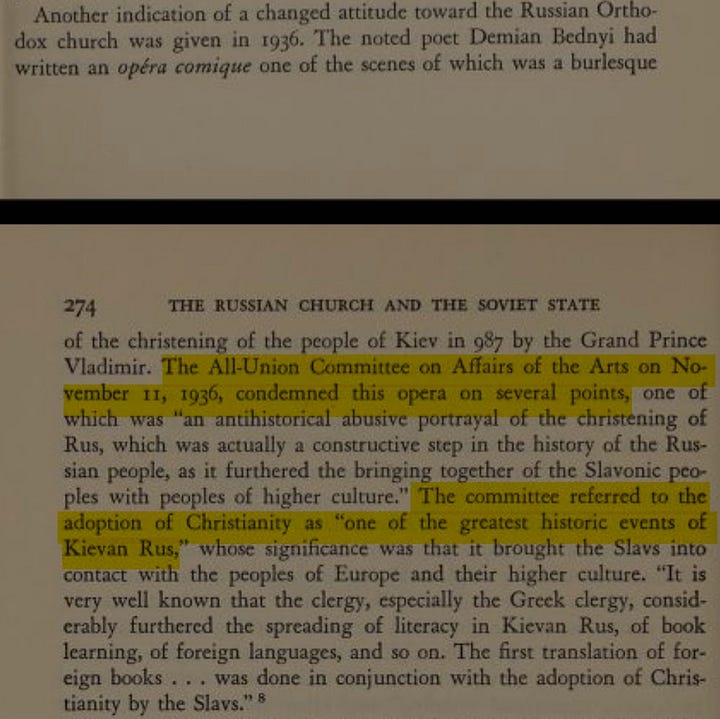
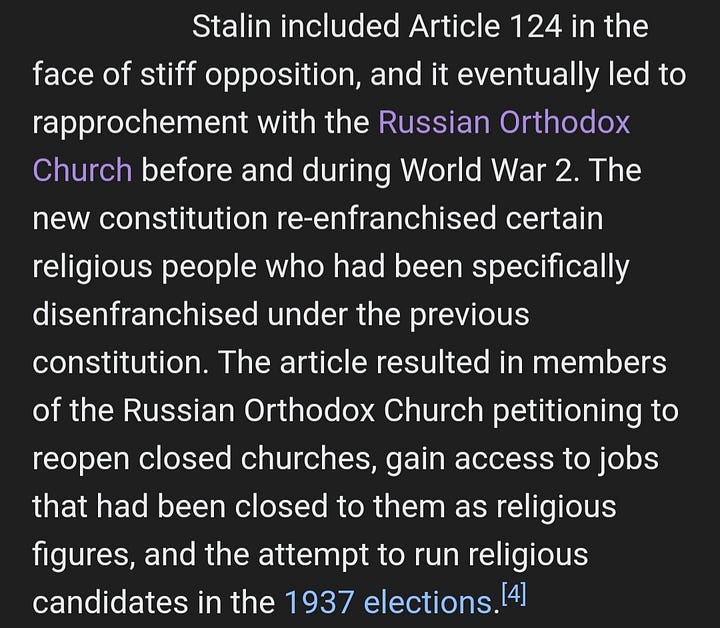
The head of the NKVD from 1936-1938, Yezhov, was the biggest persecuter of Orthodoxy, with over 100,000 being shot in 1937 alone.
He was arrested in April 1939 and immediately confessed to, abuses in investigations: beatings, falsified confessions, torture, and illegal executions.


There is ZERO evidence that Stalin or the central leadership wanted Yezhov to act like this, and plenty of evidence that they thought it was criminal.
On April 26, 1939, he confessed to conspiracy of collaborating with the German government to overthrow the government of the USSR.
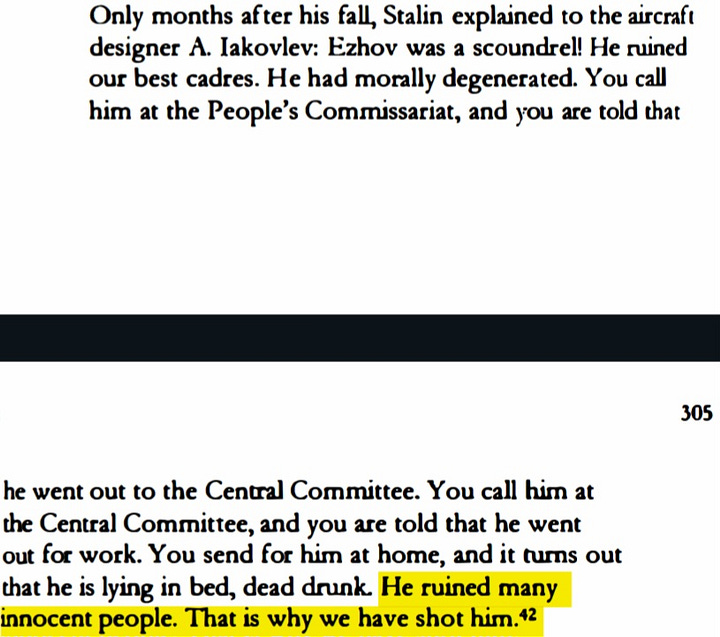
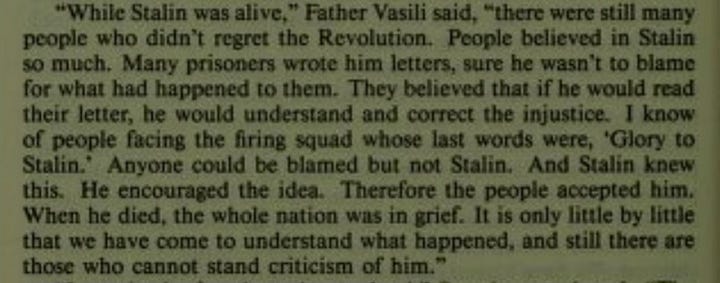
In late 1938, Stalin puts Beria as head of NKVD and executions drop from 328618 to 2552, with many arrested also being released.
It is clear from this point that a dramatic shift in anti religious policy had been taken, as many persecuters, most notably Yezhov have been purged.
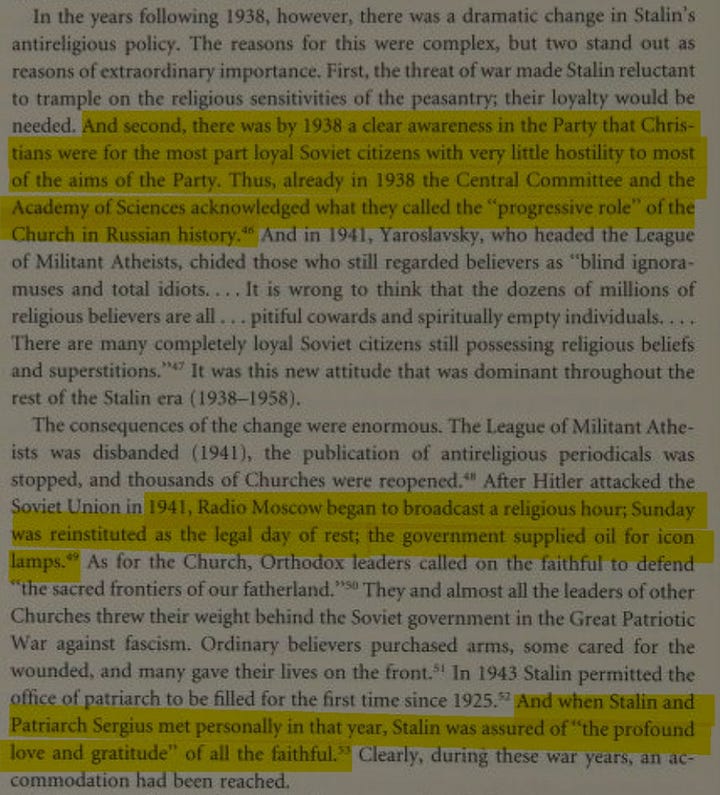
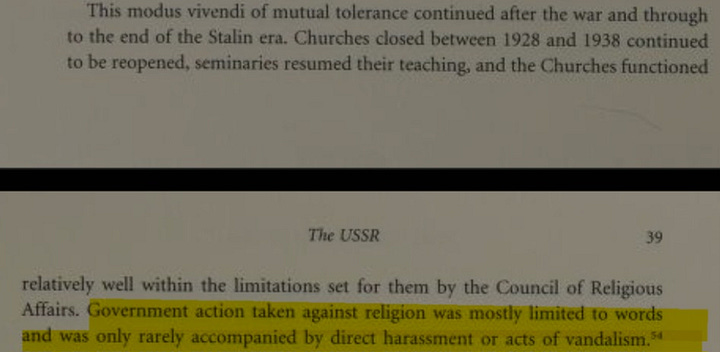
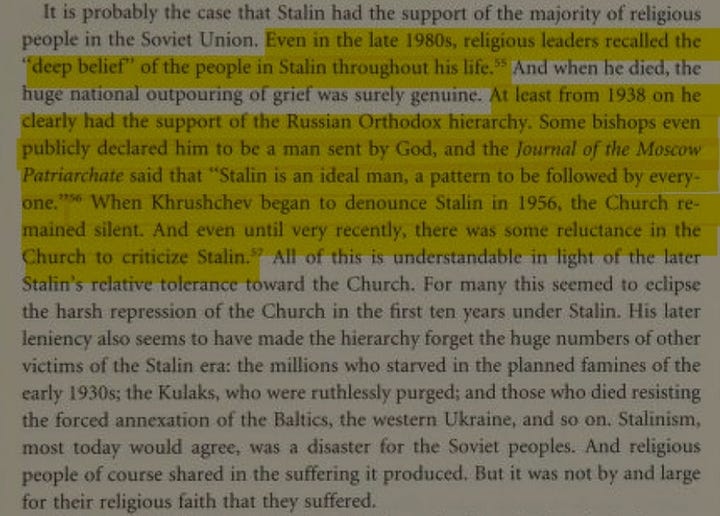
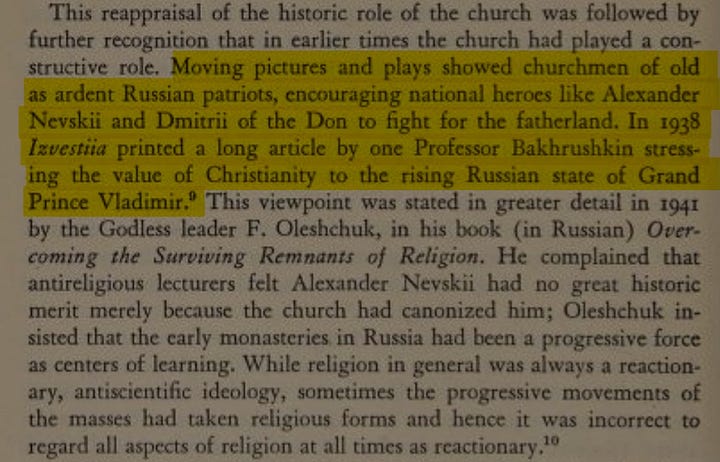
By 1939, the majority of persecuters of religion were purged, such as Yevgeny Tuchkov, Peter Krasikov, Yakov Peters, Trotsky, Zinoviev, Kamenev, Bukarin, Yezhov, etc.
This same year the Solovki Prison Camp was closed, which contained many Orthodox Christians and Clergy.
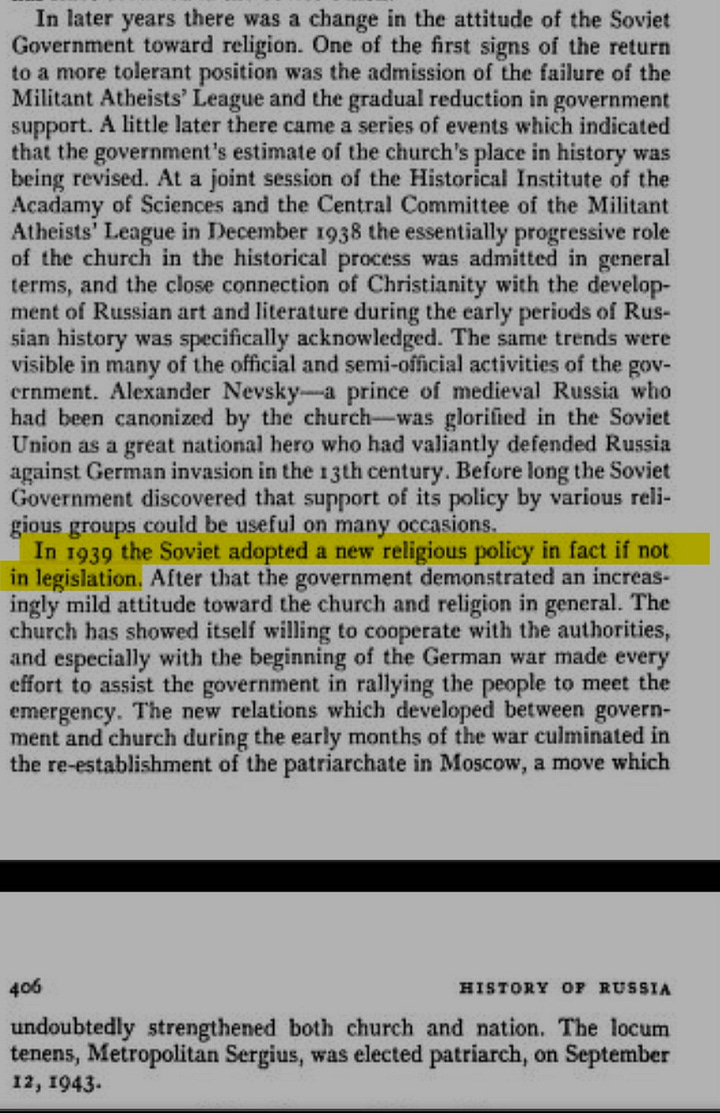

All of this ultimately debunks the notion that Stalin only reopened the Church because of WWII, as I have clearly proved that this process had been going on long before the Nazi Invasion.
Yes the Churches were reopened during WWII, but it continued to be promoted even after WWII.
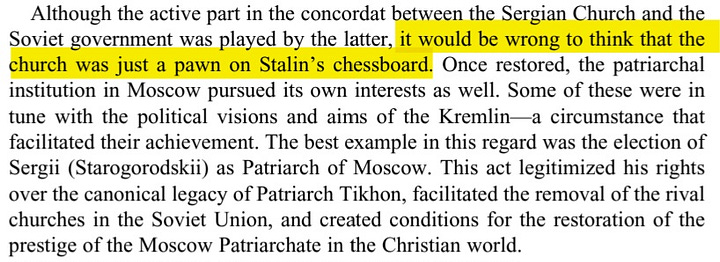
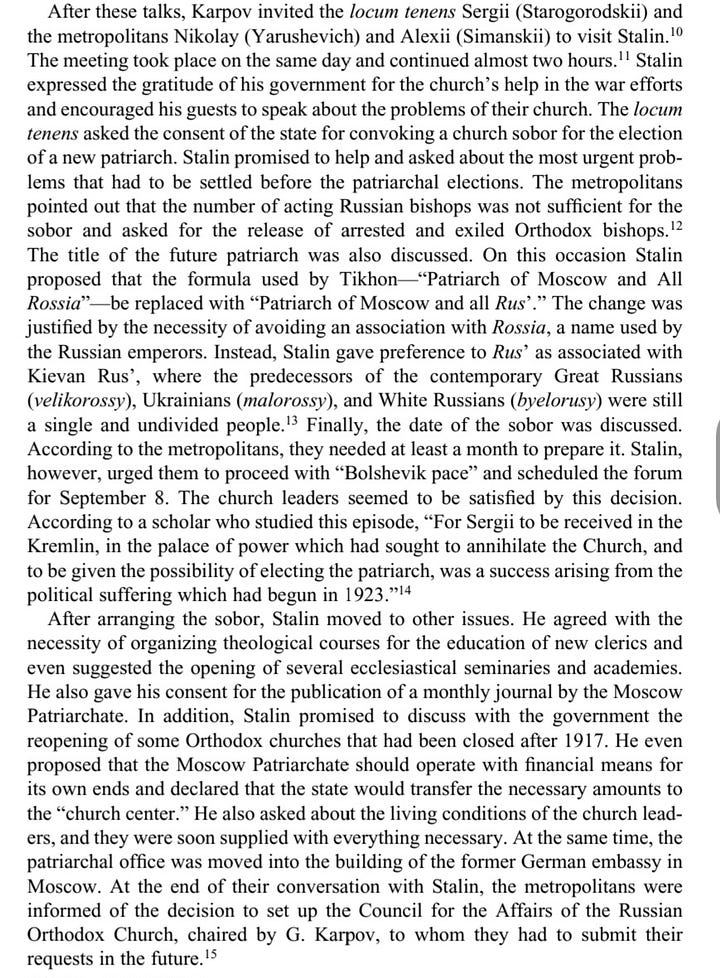
The Church blessed the Red Army, and helped fight against the fascists.
St. Matrona of Moscow prophesied to Stalin that the "Red Rooster" would win.
Many deny this, but it's based on the FACT that the authorities had a train ready to flee Moscow, and it did NOT end up leaving.
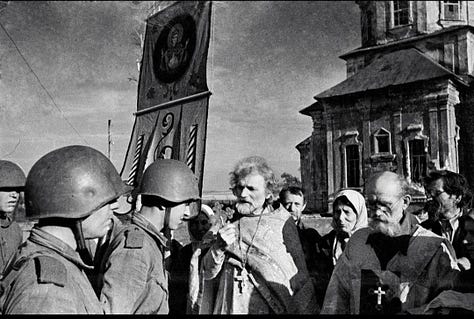
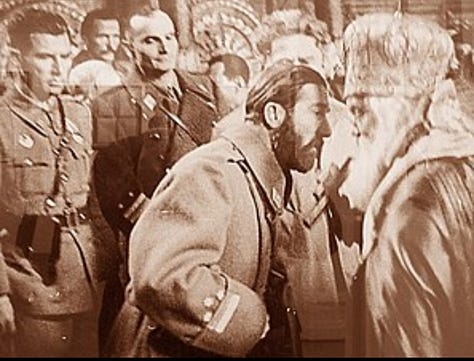
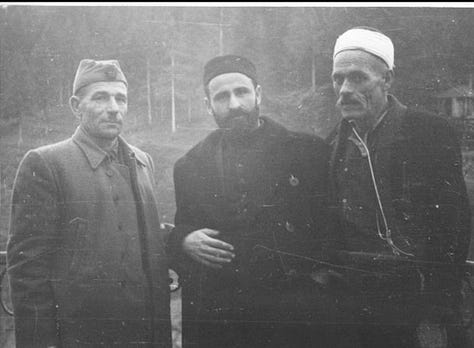
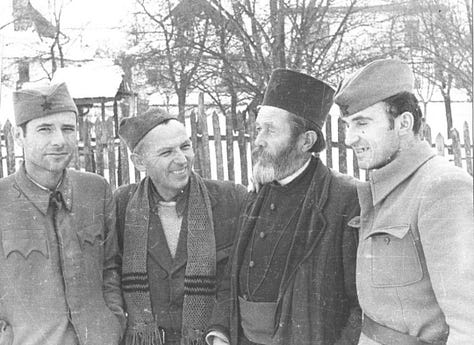
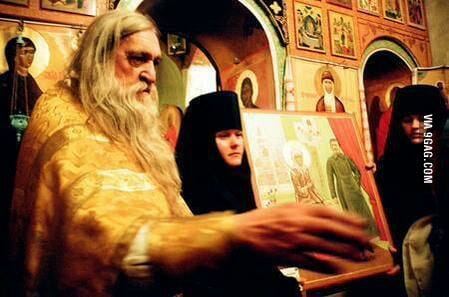
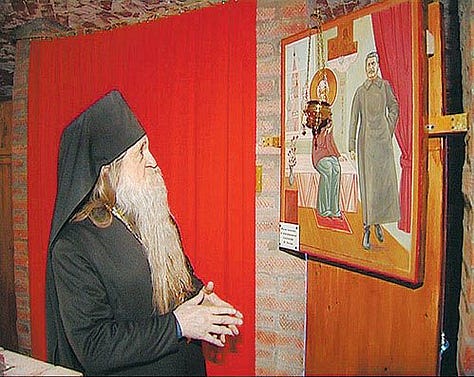
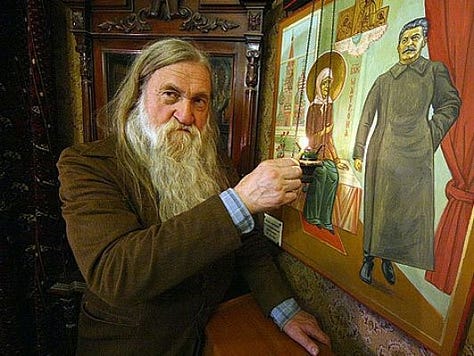
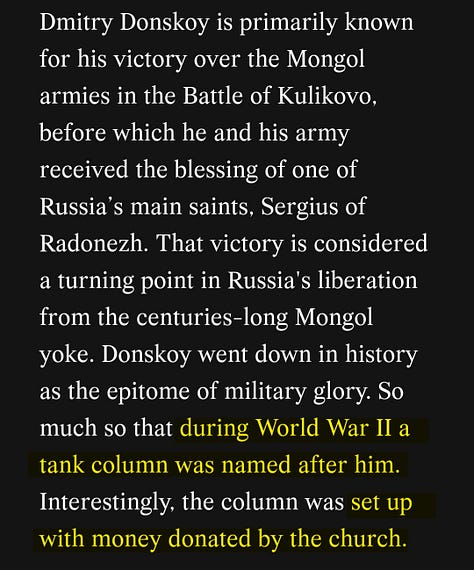
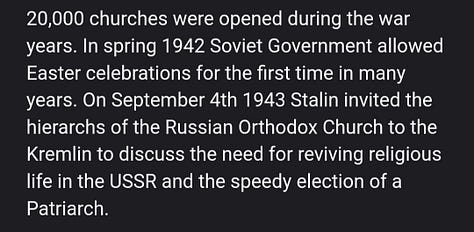
"Anti religious" propaganda being carried out after WWII, was not against the Orthodox Church, but rather the Roman Catholics.
Stalin truly believed that Moscow was the Third Rome and this can be seen in his backing and approval of the Ivan the Terrible film released in 1944.

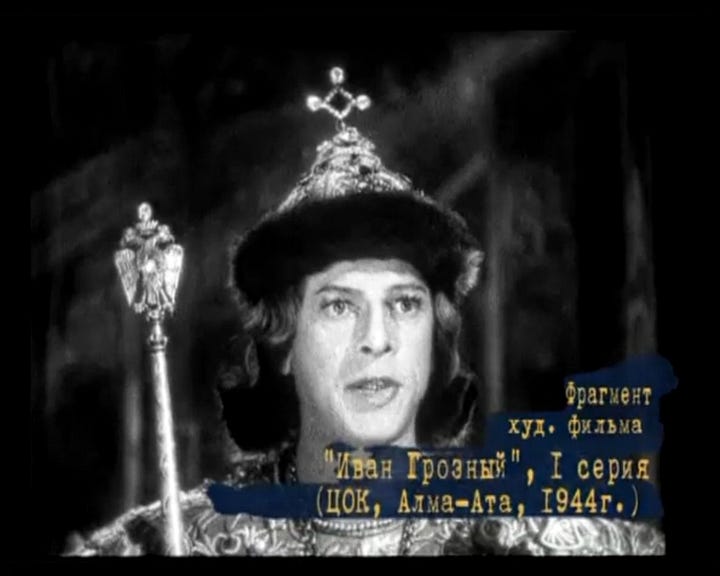
The Church did not experience persecution again until Khrushchev, who also created the majority of lies about Stalin that we hear today.
Brezhnev allowed the Church, but it was truly set free after the 1977 Constitution.
Great 1978 Documentary:
https://youtu.be/GqIO_OQptd8?si=MRt0seIgXMU09kOa
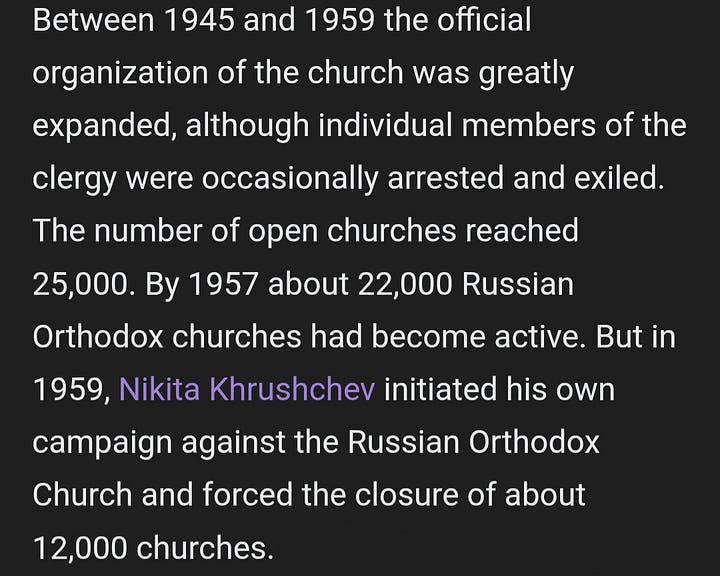

Now that I have sufficiently demonstrated the reality and truth of Orthodoxy within the USSR,
I will conclude this thread with four amazing modern day Saints canonized and venerated in the Orthodox Church.
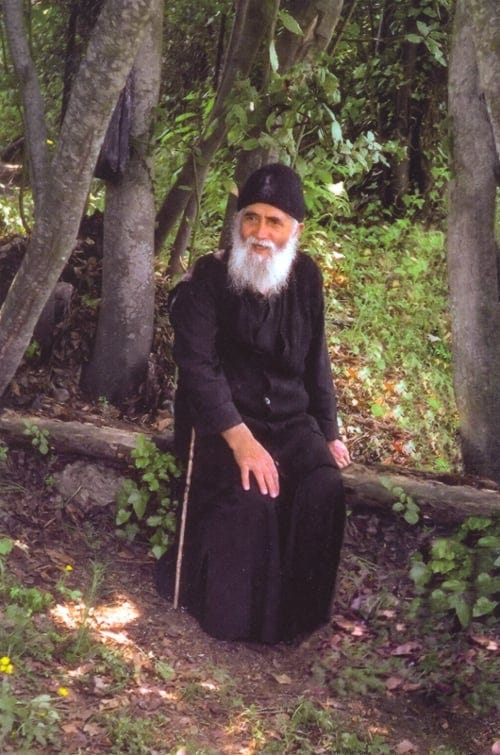
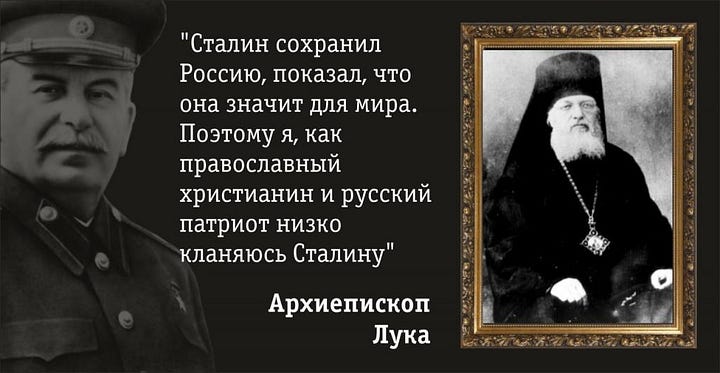
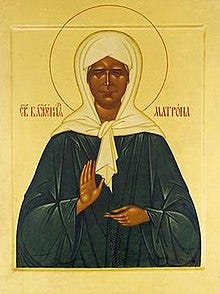
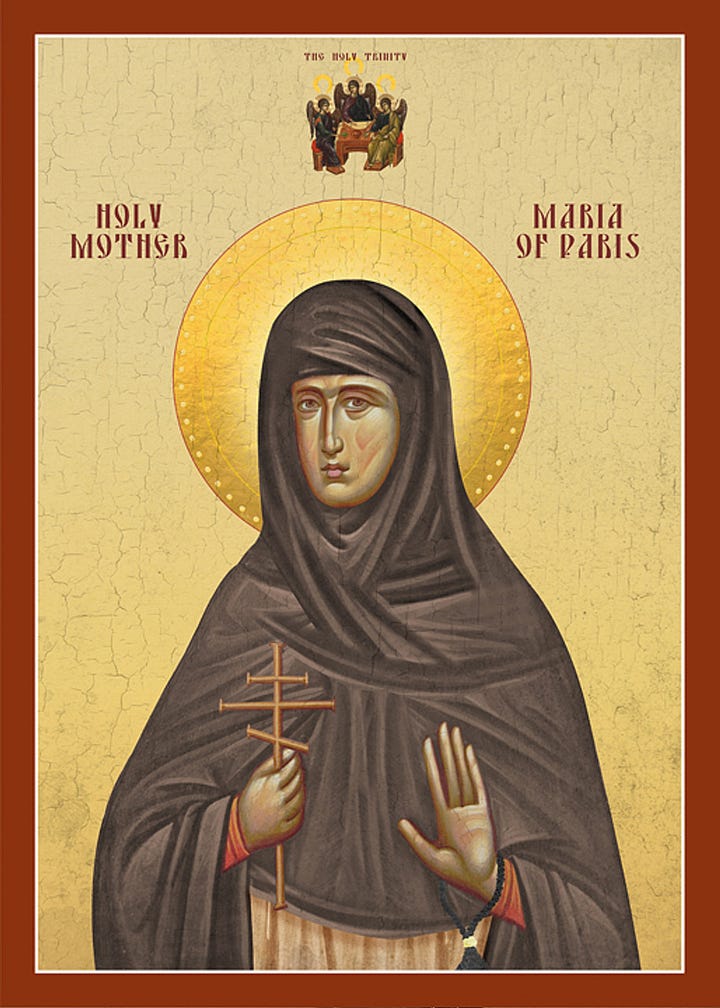
St. Luke of Crimea in his autobiography when mentioning his 3rd arrest in 1937, blames the "Yezhov Regime" as opposed to Stalin.
In 1946 he was rewarded with the Stalin prize for his medical advances, and he humbly donated the significant amount of prize money to orphanages.
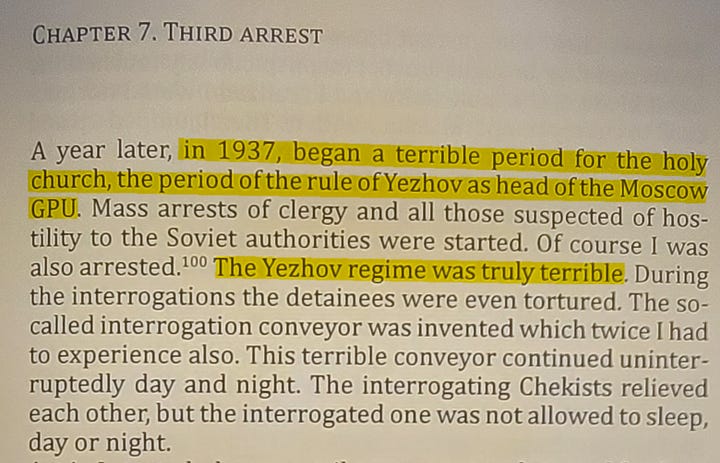

St. Matrona of Moscow, prophesied to Stalin not to leave Moscow, as Hitler was encroaching, because the Red Army would win.
Just after a meeting between Matrona and Stalin a turning point was outlined in the war, coincidence?
This icon is in the Tbilisi’s Holy Trinity Cathedral.
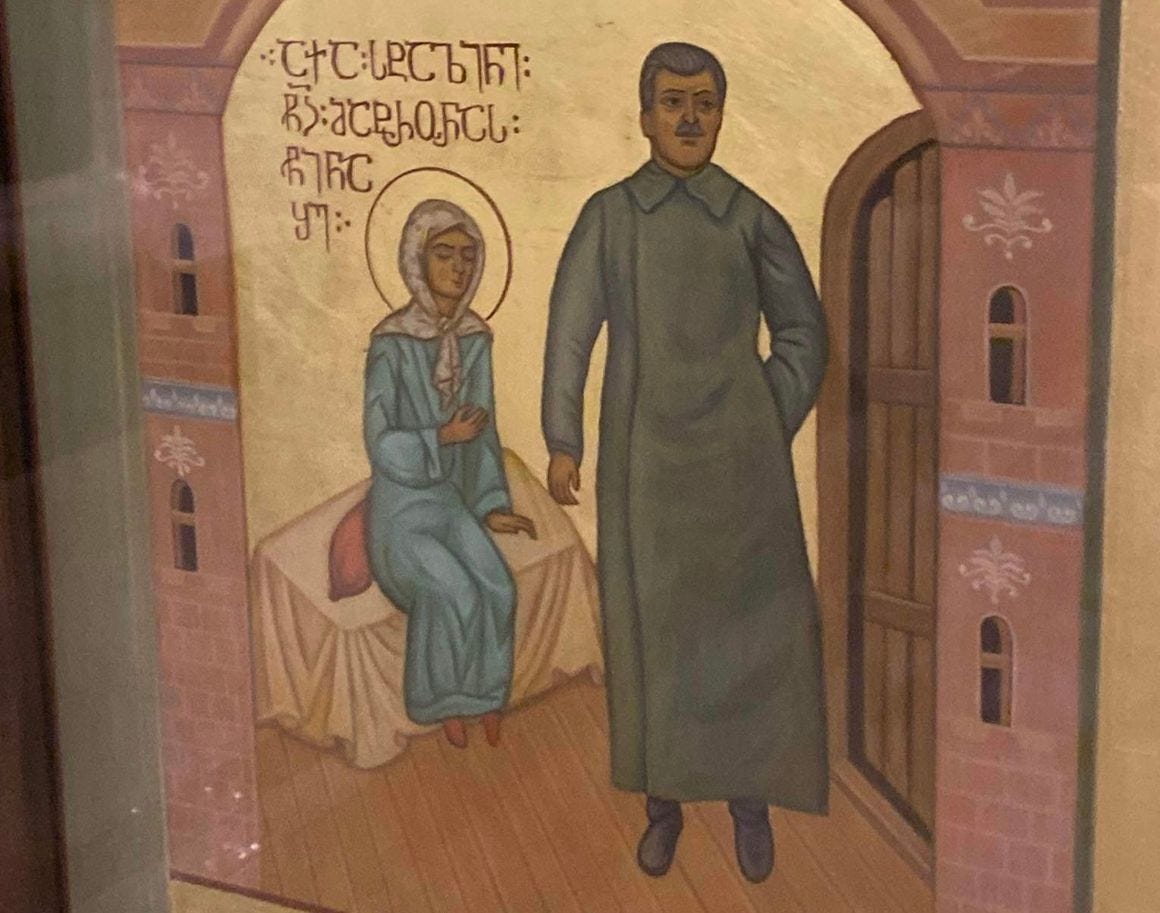
St. Maria of Paris was a Bolshevik elected deputy mayor of Anapa in Southern Russia.
She fled to Paris due to the Civil War, became a Nun, and during the Nazi invasion, she saved many Jews and helped them flee.
But in 1945 she was thrown into a concentration camp where she died.
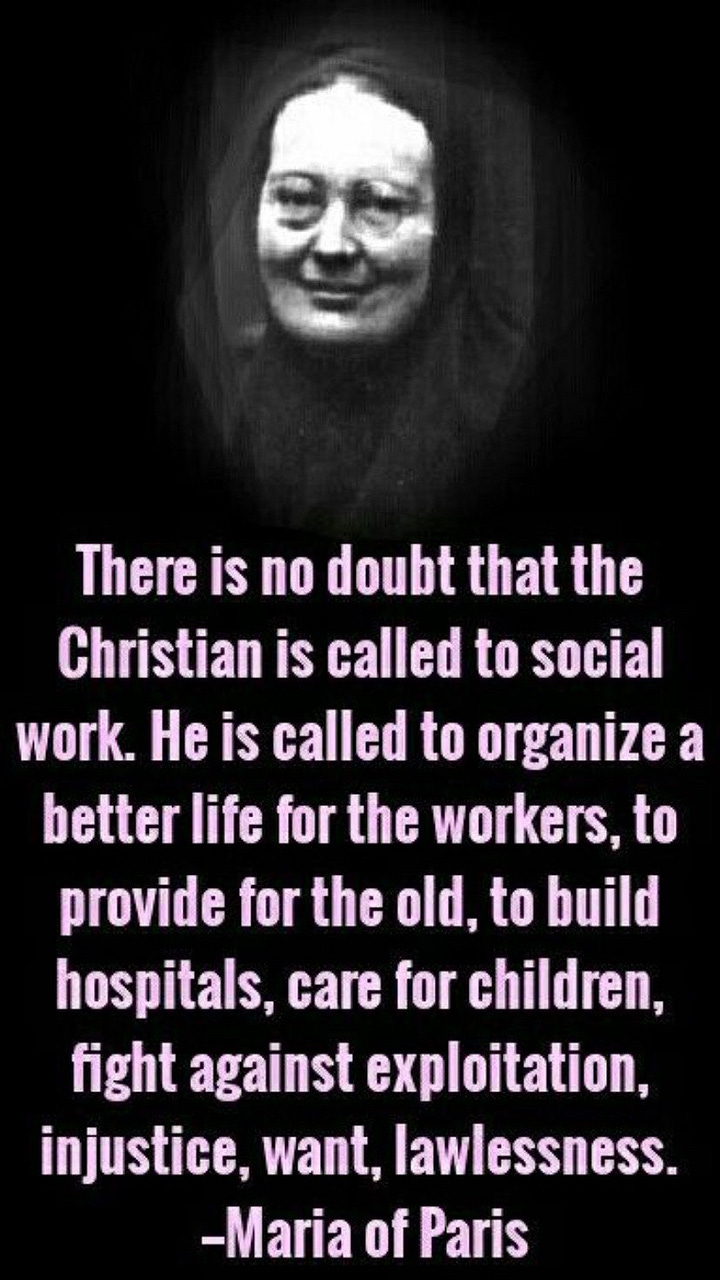
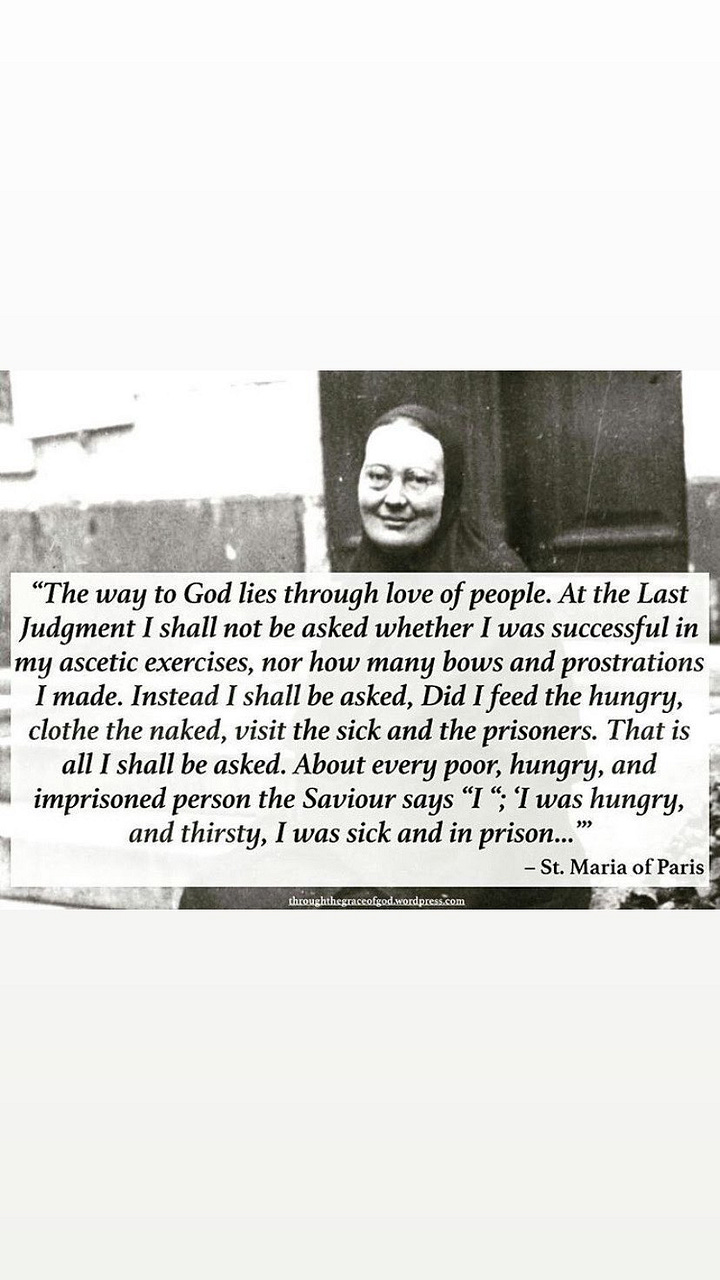
The KPRF and ROC are fully reconciled today, for example Patriarch Kirill gave an award of Honor and Glory to the head of the party, Zyugenov.
In conclusion, I ultimately agree with two of the most beloved modern day Saints:
St. Paisios of Mount Athos and St. Luke of Crimea
